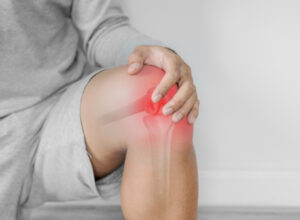Exploring the Benefits of Homeopathic Treatment for Chronic Knee Pain
While modern civilization and growing industries have greatly diminished the need for physical activity, they have also contributed to an increase in musculoskeletal problems.The majority of chronic knee pain is mostly brought on by osteoarthritis, a degenerative condition of the knee joint that causes severe joint pain, stiffness, and inflammation as well as significant impairment to the patient’s everyday activities.

While suffering may be comparable for both sexes, women in their peri- and post-menopausal years typically experience greater suffering than men. the cause of which may be linked to the age-related reduction of estrogen; nevertheless, in contrast, younger boys are typically more impacted by this PROBLEM. In addition to age and gender, the adult population is also affected by a variety of modifiable and non-modifiable factors that exponentially increase the risk of developing knee OA and a reduced quality of life. These factors include genetic predispositions, obesity, inactivity, low bone density, poor dietary habits, trauma, and work environment conditions.
Clinical manifestations, a physical examination, and, if necessary, X-ray, MRI, and arthroscopy are used to confirm the diagnosis of osteoarthritis. The characteristic radiographic characteristics of osteoarthritis (OA) in the knee are joint space narrowing, subchondral bone sclerosis, cyst formation, and osteophytes. One of the primary early symptoms of osteoarthritis (OA) that causes joint space narrowing is cartilage loss.
Another source of persistent knee discomfort is rheumatoid arthritis, a 1% global incidence chronic inflammatory disease with no recognized etiology. The articular index of joint soreness and the length of morning stiffness (limbering up time) are used to measure improvement. Homeopathy is still one of the most sought-after forms of treatment due to progressive joint degeneration and impairment, problematic side effects, and unhappiness with orthodox therapy.
In these situations, treating pain with regular non-steroidal anti-inflammatory medications may provide some patients with short-term relief, but using these medications frequently has unintended adverse effects. It is also to blame for the decline in “activities of daily living” (ADL) among the community’s older, dependent population. A lot of these medications also have unfavorable side effects. overuse of these medications has occasionally been linked to major health risks, including gastritis, peptic ulcer syndrome, mood disorders, hematemesis, melena, and stomach perforations, which raise the risk of hospitalization and can even be fatal.
At STAR HOMEO, we use extremely highly diluted medications that are now known to contain nanoparticles of the original drug substances. These nanoparticles may act at the molecular level, potentially impacting DNA and causing a cascade of relevant target gene expressions favorably, presumably via their regulatory action through epigenetic modifications. This could then start and manage the recovery process in a way that would not only relieve their joint pain, and muscle stiffness, and favorably modify inflammatory changes but also improve their daily activities, resulting in increased productivity and an improved quality of life.
To treat the patient as a whole, not just the ailment, STAR HOMEO entails a thorough examination of their emotional, spiritual, and physical health.